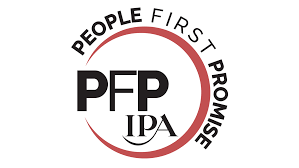By Ciaran Deering, Head of Online, The Grove Media

So while all the excitement is currently on text-based apps – which to date, have limited and seemingly decreasing appeal for advertisers – maybe brands should focus a little more on the growing opportunities on the video platforms as competition among them heats up.
Meta, Twitch and Twitter have all announced new services or hinted at product innovations over the past few weeks. Meta has made several announcements focused on helping creators to make more and better content as part its bid to compete with TikTok. Facebook unveiled additional editing and video creation features, and shortly after Instagram announced update to its Reels templates to make it easier for users to create videos. And at Cannes Lions, Meta announced an expansion of ads on Reels and the launch of app promotion ads on both Facebook and Instagram.
In July, Twitch revealed plans to launch a TikTok-like short-form video feed. The new feature was announced at the Amazon-owned company’s TwitchCon event in Paris, which will be a scrollable feed in the Twitch app that shows users a personalised mix of clips from a variety of creators.
And like Threads, Twitter has hardly been out of the headlines over the past month or so. Consumers and ad industry alike were critical of the X-rebranding, and Elon Musk continued to surprise with the news that he wants Twitter to become more like WeChat, the app in China that combines social media with payments, games and ride-hailing. Somewhat in the shadows of all this were Twitter’s intentions in video. New CEO Linda Yaccarino hinted at plans to introduce a video ads service, with full-screen, sound-on ads on Twitter’s new video feed. And Elon Musk is also pursuing a move to CTV with a planned video app for smart TV.
So, as the social wars heat up, brands are well advised to focus on which platforms best match their marketing goals. TikTok has been the runaway success of the social video. It’s reshaping the landscape and influencing how its competitors behave and go to market. After just four years, TikTok passed the one billion user mark and has been the world’s most downloaded app since early 2020.
According to Social Insider, TikTok is out in front with an engagement rate 5.53%, compared to Instagram’s average of 4.36 and YouTube Shorts’ 3.8%. However, in terms of watch rate, Instagram Reels are out in front with an average of 13.08%, followed by TikTok on 9.06% and YouTube Shorts some way behind on 2.52%.
TikTok is still considered the domain of younger users (15 – 24s). However, the platform has worked hard to expand its content offering and have succeeded in attracting older audiences in significant numbers – 40% of UK users are now aged 25-54. This makes TikTok more relevant to advertisers targeting this demographic.
Instagram is generally preferred by 25-34s and skews slightly older than TikTok. As for YouTube Shorts – the last big player into the short-form video content industry – it has recently surpassed 15 billion views daily and reached 1.5 billion monthly active users. That’s a lot of visibility potential that should not be overlooked by brands leveraging video marketing. Users tend to skew younger, however, as YouTube attracts a wider demographic, with 35+ audiences being drawn from the main platform to Shorts.
For ecommerce advertisers, TikTok and Instagram Reels allow the insertion of shopping links for products allowing users to browse and purchase products without leaving the app. YouTube Shorts currently doesn’t contain this feature, so is less attractive to ecommerce businesses seeking to drive sales. It’s also worth noting that Shorts are a placement within YouTube’s popular Video for Action format – designed to drive conversions – so advertisers who use this campaign type are reaching users on Shorts by default.
And with the social video platforms vying for ever greater audiences and stepping up to make things easier for content creators and advertisers, this then puts a greater spotlight on the quality and engagement potential of the creative assets.
Advertisers need to think very carefully about their creative, as different approaches are needed for each of the different platforms. Just as it’s essential to understand the different audiences each platform attracts, it’s equally important to be clear about the different environments in which ads are going to run.
In general, you have to get to the message quickly and keep it short and sweet. Shooting in portrait is still the standard, but many of the platforms now enable you to change aspect at the point of uploading the ad. And, as has been said many times before, don’t assume that a TV style ad will work well across all social video platforms.
Facebook is more suited to classic TV ads. Most FB users watch ads with sound off, so captions are usually required. Ads that are more in line with user generated content tend to work better on Instagram Reels. Instagram ads are muted by default, so important to lead with clear visuals or text. And think about thumbnails when shooting the video as you are required to choose a thumbnail from the footage rather than add one in separately.
Similar to Instagram, organic-style ads tend to perform better on TikTok. According to the platform, users respond well to an ‘unpolished aesthetic’ that doesn’t look like a traditional ad. YouTube is a good environment for driving leads due to their huge audience and granular targeting. Ads need to get to the point and deliver a proposition within five seconds or the user may skip ad, if the skippable function is available.
Right now there’s a lot happening in social media. Players are making changes, signalling often grand intentions and jostling for position. Not all of this will be good news orbeneficial for advertisers. But the developments in social video should help advertisers to improve engagement with audiences, particularly the harder-to-reach younger users.
Photo by Camilo Jimenez on Unsplash









